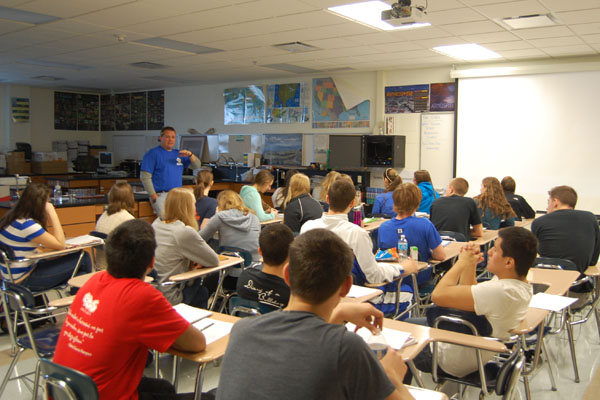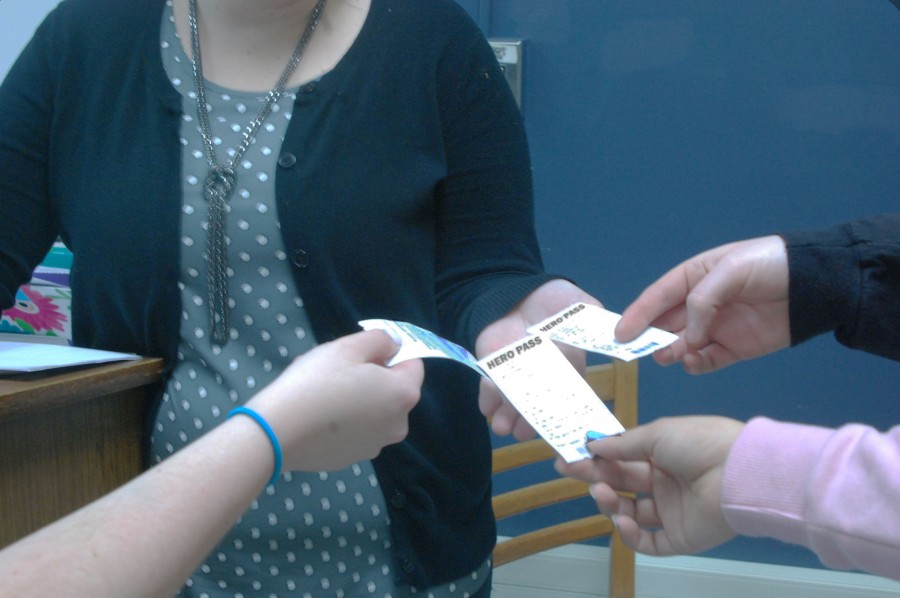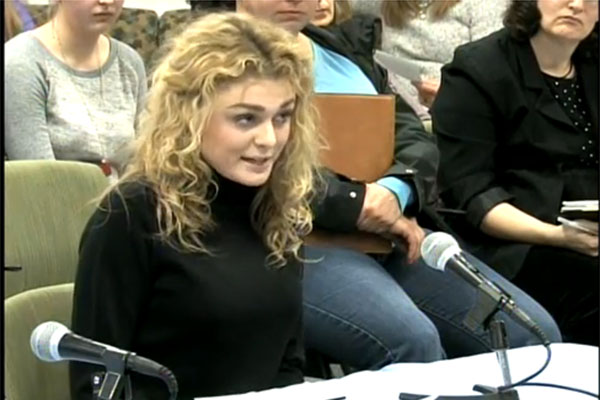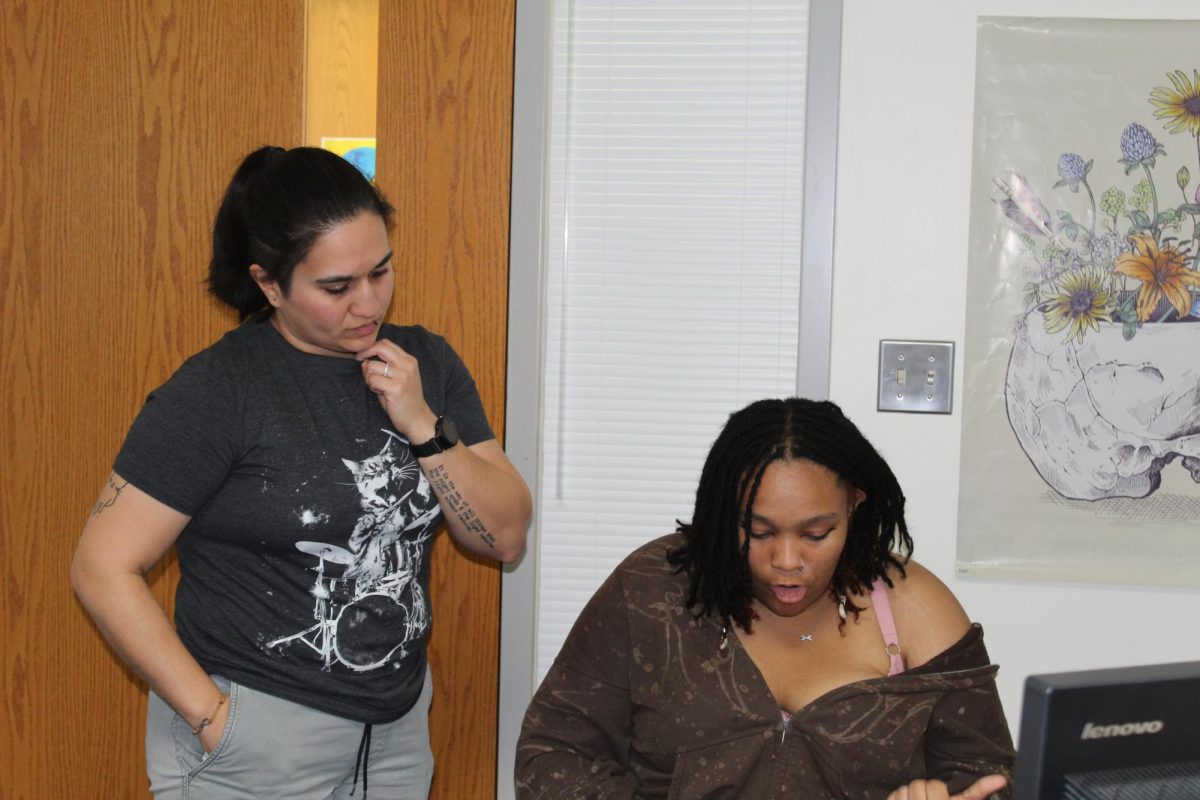If you walked into Riverside Brookfield High School, you might think this year is like any other. With high annual test scores and recognition as one of the best high schools in the area, RB appears to be functioning well and sending its students into the adult world prepared both academically and socially.
Look a little closer. This might not be the case at all.
Two years after the failure of RB’s operating fund referendum, we students are beginning to feel the serious effects of a lack of funding. We are the ones being the hardest hit.
Of the many changes at RB over the past two years, none have been more upsetting than watching some of our most beloved teachers leave due to budget cuts. However, more significantly, the result is that having fewer teachers but the same number of students means that our average class size has skyrocketed to 27.6 students in our core classes.
This might seem like it is not a big deal. Students are still in their classes being taught by mostly the same teachers and the curriculum has not changed. However, the quality of education at RB is being compromised by this increase in class size. Sit in a Math class with 37 students, an AP Language and Comp class with 34, and you can feel it.
The students who are affected the most are the ones who require individualized attention from their teachers, the ones who need the most help. These students, who are now just faces in a crowd of thirty or more in just over a third of RB’s core classes, do not receive the same quality help that they once did. These are the students who fall through the cracks and whose futures are compromised.
While many teachers are still available before or after school, students may have athletic conflicts and the teachers themselves have busy schedules. Even though the time allotted for a specific class is not the only time a student can get help, those 50 minutes are when students are completely engaged. It is unfortunate that increased class sizes mean they cannot get the help they need.
Inflated class sizes are not limited to any one grade level or subject. Many AP courses include more than 30 students in classes which already have the most rigorous curriculum the building has to offer. Size becomes an obstacle that makes it difficult to give each student the attention they need to ensure success. In a class like AP Language and Composition, where classroom discussions about specific readings are essential, it is exponentially more challenging to conduct a meaningful discussion with 30 students than with 20.
We understand that radical changes are simply not realistic. However, it is the duty of the school board, the teachers, and the administration to unite and arrive at creative solutions.
While some argue that larger class sizes may actually be beneficial, training students for the types of lectures they might have when they reach college, it is unreasonable to ask a freshman student, particularly an at-risk freshman student, to enter English 9 with 30 other students after coming from a much smaller feeder school. The transition to high school is difficult for many students, and it can be easy to get lost early in your high school career and never recover. Why couldn’t the board and administration intentionally cap just freshman and sophomore classes between 22 to 25? Larger sizes could be restricted for the more prepared juniors and seniors.
We understand that upcoming contract negotiations between the board and the teachers will be difficult, but would it be out of the question to ask teachers to give up a planning period to be available for students to come in and ask questions? What if the school revised its schedule to include a 15 to 20 minute homeroom each day? This would allow every student the ability to get the extra help that they need on a particular subject. Making this change would only shave two to three minutes off of each class period, not much of a reduction at all.
If we, as a community, begin to cultivate and suggest innovative ideas, we can face this problem and allow students to get the individualized attention that they need.
Students are the one who are affected by increased class sizes. It is evident that classrooms with 30+ students are not as academically productive as smaller classes. More time is spent on attendance, collecting homework, discipline, and answering individual questions.
The students of Riverside Brookfield are a resilient group who will respond to this challenge as they have with any other, with an open mind and willingness to compromise. Still, we depend on all adult parties to sit down and create solutions that are in the best interests of the student body.
Community members, start to cultivate and suggest innovative ideas so that we can face this problem and allow students to get the individualized attention they need.
Board and teachers, sit down and get to work.
Everyone involved in RB needs to continue to strive for excellence both in and out of the classroom, regardless of the challenges in the days to come.



















Christine Sutton • Jan 18, 2013 at 12:56 pm
Thank you for your continued coverage on class size and the impact that it is having on the entire RBHS community. Additionally, I appreciate the Editorial Board taking a position and offering it up for further discussion and dialogue. Clarion is setting a good example of what leadership, communication and commitment to an issue can look like.